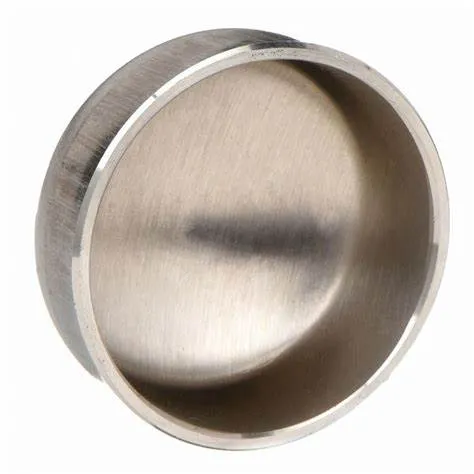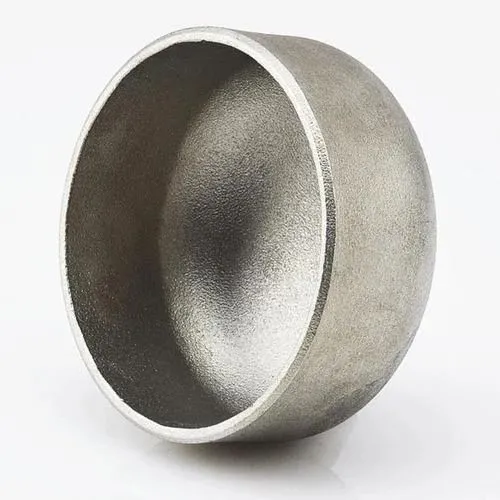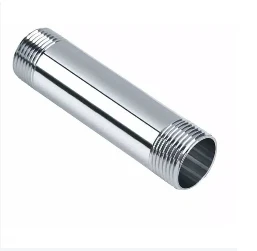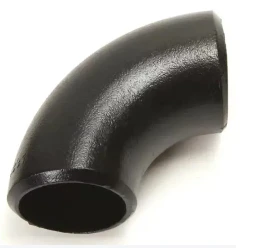JIS B2311 เป็นมาตรฐานอุตสาหกรรมของญี่ปุ่นซึ่งครอบคลุมถึงข้อต่อท่อแบบเชื่อมชน รวมถึงฝาปิดที่ใช้ในระบบท่อ ฝาครอบเชื่อมแบบชนมีจุดประสงค์ในการปิดปลายท่อ เพื่อเป็นซีลเพื่อป้องกันการรั่วไหลหรือการปนเปื้อน ต่อไปนี้เป็นข้อมูลเบื้องต้นเกี่ยวกับฝาครอบเชื่อมชน JIS B2311:
- 1. JIS B2311 Standard:
- - มาตรฐาน JIS B2311 ระบุข้อกำหนดสำหรับการออกแบบ ขนาด วัสดุ การผลิต และการทดสอบอุปกรณ์เชื่อมชน รวมถึงฝาปิด ในระบบท่อ
- - มาตรฐานทำให้มั่นใจได้ว่าฝาครอบที่ผลิตตามมาตรฐาน JIS ตรงตามมาตรฐานคุณภาพและเข้ากันได้กับส่วนประกอบท่ออื่นๆ
- 2. หมวกเชื่อมชน:
- - ฝาครอบเชื่อมแบบชนตามมาตรฐาน JIS B2311 เป็นข้อต่อที่ออกแบบมาเพื่อปิดและปิดผนึกปลายท่ออย่างแน่นหนา ให้การปกป้องและรักษาความสมบูรณ์ของระบบท่อ
- - ฝาครอบใช้ในสถานการณ์ที่จำเป็นต้องปิดปลายท่อ ไม่ว่าจะถาวรหรือชั่วคราว เพื่อป้องกันการรั่วไหล การปนเปื้อน หรือเพื่อให้ระบบสมบูรณ์
- 3. วัสดุและการก่อสร้าง:
- - ฝาครอบเชื่อมชนภายใต้ข้อกำหนด JIS B2311 มีจำหน่ายในวัสดุหลากหลาย เช่น เหล็กกล้าคาร์บอน สแตนเลส และเหล็กโลหะผสม เพื่อตอบสนองความต้องการในการใช้งานที่แตกต่างกัน
- - ฝาปิดเหล่านี้ผลิตขึ้นโดยใช้วิธีการก่อสร้างที่ได้มาตรฐานเพื่อให้แน่ใจว่ามีการเชื่อมต่อที่แข็งแรงและไม่มีรอยรั่วเมื่อเชื่อมเข้ากับปลายท่อ
- 4. การสมัครและสิทธิประโยชน์:
- - ฝาครอบเชื่อมแบบชนใช้งานได้ในอุตสาหกรรมต่างๆ รวมถึงน้ำมันและก๊าซ กระบวนการทางเคมี โรงบำบัดน้ำ และอื่นๆ ที่จำเป็นต้องปิดปลายท่ออย่างแน่นหนา
- - ฝาครอบช่วยป้องกันปลายท่อจากองค์ประกอบด้านสิ่งแวดล้อม ป้องกันการปนเปื้อน และช่วยรักษาความสะอาดและความสมบูรณ์ของระบบท่อ
- 5. การติดตั้งและการเชื่อม:
- - แนวทางปฏิบัติในการติดตั้งที่เหมาะสม รวมถึงการวางแนวที่ถูกต้อง การเตรียมปลายท่อ และเทคนิคการเชื่อม ถือเป็นสิ่งสำคัญในการติดตั้งฝาครอบเชื่อมแบบชนเพื่อให้แน่ใจว่ามีการซีลที่แน่นหนาและป้องกันการรั่วซึม
- - การเชื่อมเป็นวิธีการทั่วไปในการติดฝาปิดเข้ากับท่อ ซึ่งให้การปิดที่ปลอดภัยและถาวร ซึ่งสามารถทนต่อแรงดัน ความแปรผันของอุณหภูมิ และการไหลของของไหลภายในระบบ
- โดยสรุป ฝาครอบเชื่อมชน JIS B2311 เป็นส่วนประกอบสำคัญที่ใช้ในระบบท่อเพื่อปิดผนึกและปกป้องปลายท่ออย่างแน่นหนา ฝาครอบเหล่านี้เป็นไปตามข้อกำหนดมาตรฐานเพื่อให้มั่นใจในคุณภาพ ความน่าเชื่อถือ และความเข้ากันได้ภายในการใช้งานทางอุตสาหกรรมที่จำเป็นต้องมีการปิดท่อและการป้องกัน
What Is a Butt Welding Cap and How Is It Used in Industrial Piping?
In industrial piping systems, end-of-line sealing and branch closures require robust solutions. A butt welding cap serves as a critical component for terminating pipes securely. By providing a seamless, welded closure, this fitting maintains system integrity, prevents leaks, and supports compliance with industry standards.
What Is a Butt Welding Cap?
A butt welding cap—also called a pipe end cap or buttweld end cap—is a round fitting designed to close off the end of a pipe. It’s manufactured to match the pipe’s outer diameter and schedule, with either a hemispherical or flat face. To install, both the pipe end and cap are beveled to form a V‑groove, enabling full‑penetration, fusion welds. Common materials include carbon steel, stainless steel, nickel alloys, and other engineered grades, chosen to satisfy pressure, temperature, and corrosion‑resistance requirements.
How Is Butt Welding Cap Used in Industrial Piping?
Butt welding caps find application across oil & gas, petrochemical, power generation, water treatment, and general process industries for both permanent and temporary closures. During hydrostatic testing, technicians install caps to seal off sections of piping while monitoring for leaks. In new construction or retrofit projects, caps terminate branch lines, future tie‑in spools, or dead‑end mains until system expansion. Welders prepare each joint by cleaning and beveling surfaces, aligning the cap precisely, and executing a root pass followed by filler passes per the qualified Welding Procedure Specification (WPS). Post‑weld heat treatment and non‑destructive examination (NDE)—such as radiography or ultrasonic testing—verify weld integrity and compliance with ASME B16.9 and related standards. Additionally, temporary caps enable safe isolation during maintenance, allowing for segment testing and dewatering under regulatory protocols.
Benefits and Best Practices
Butt welding caps offer a smooth‑bore transition that minimizes flow disruption and stress concentration. Their full‑penetration welds deliver exceptional structural strength and leak resistance. To optimize performance, engineers should:
Select caps with matching material grades and wall thicknesses
Adhere to proper bevel angles and joint fit‑up tolerances
Follow qualified WPS protocols rigorously
Consider cladding or protective coatings in corrosive environments to extend service life
Regular inspection and thorough documentation ensure long‑term reliability and safe operation under demanding conditions.
Butt welding caps are indispensable components for achieving durable, leak‑proof pipe terminations in a wide range of industrial applications.
Butt Welding Cap FAQs
What is a butt welding cap?
|
What materials are commonly used?
|
What standards govern butt welding caps?
|
How are butt welding caps installed?
|
Where are butt welding caps typically used?
|
What are the advantages of threaded caps?
|
















